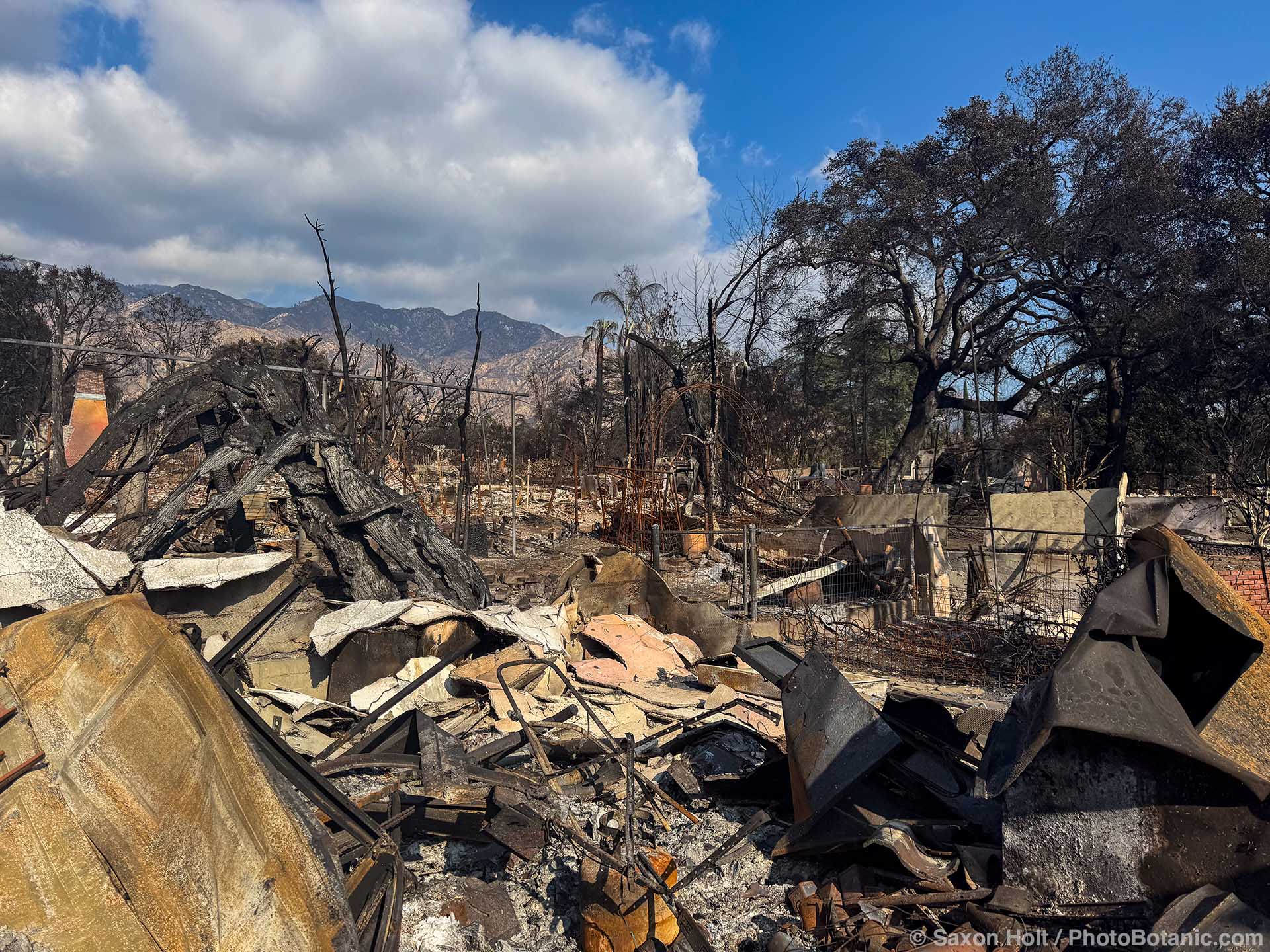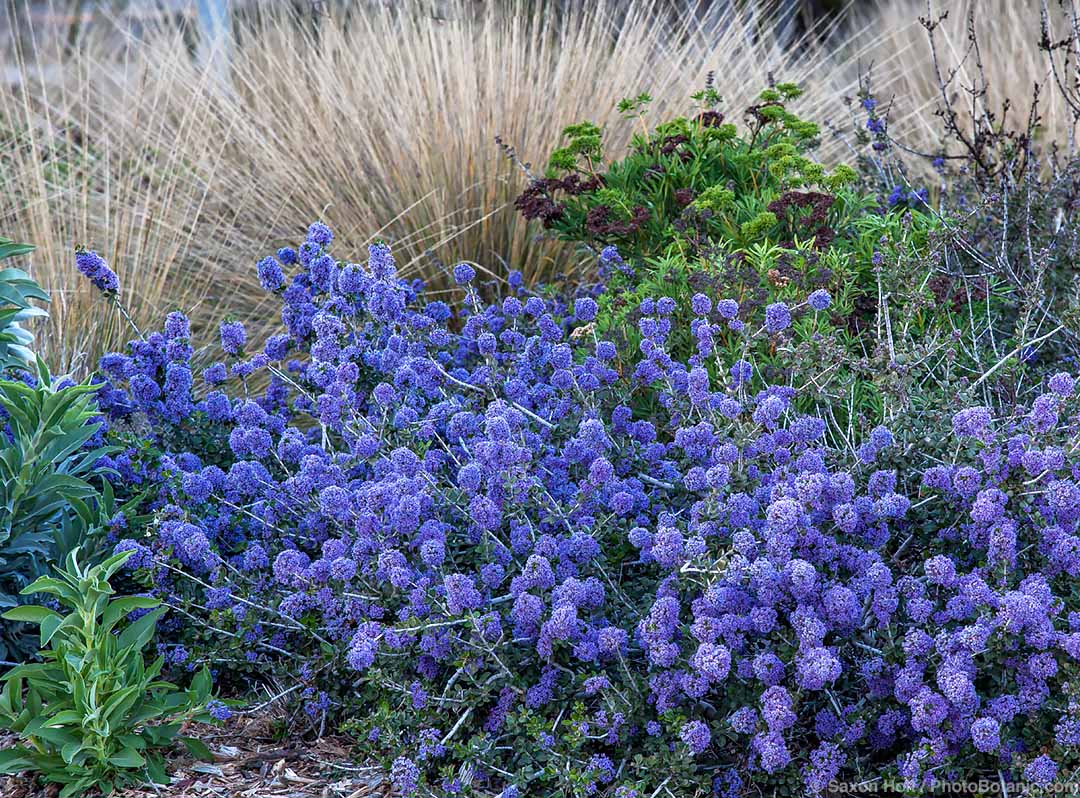Is It Okay to Feed the Birds?
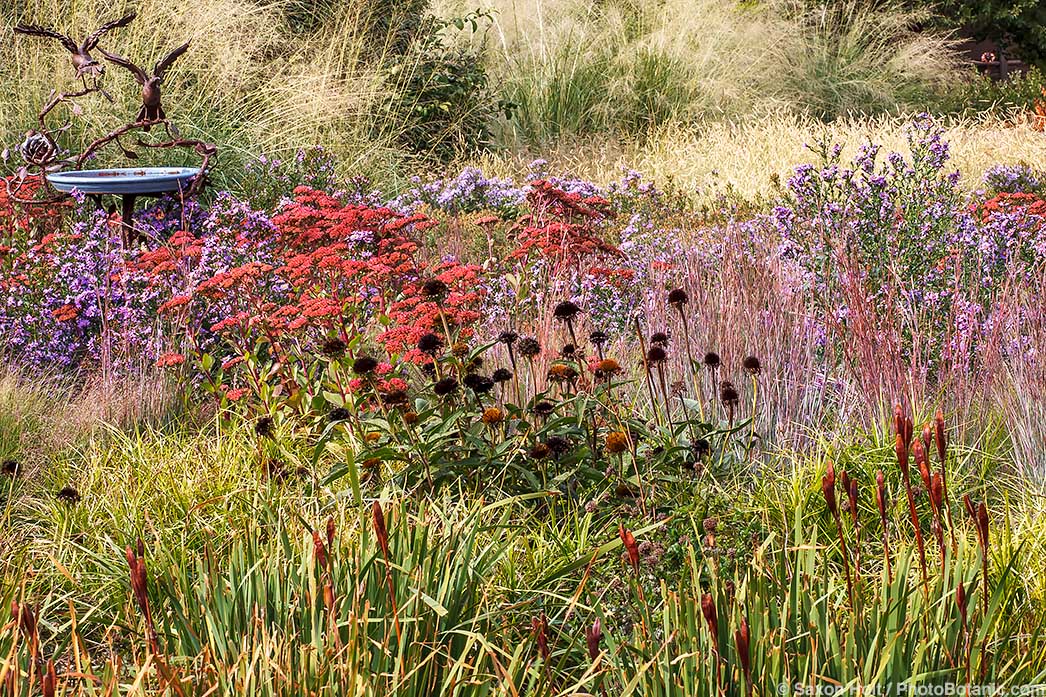
Share This!
Birds are what bring a garden to life and gardeners have always known this. We plant fruit-bearing shrubs and trees as much for the birds as for our own enjoyment. Bird houses and bird baths are ubiquitous features of home gardens. Many if not most of us also set out food for birds at backyard feeders.

Bird bath in habitat garden that provides nectar, seeds, and insects for birds
Bird populations have been in sharp decline for decades, a result primarily of habitat loss and pesticides. Yet we often hear that feeding wild birds can make things worse instead of better.
Feeding birds is said to spread disease as large numbers of unrelated birds come into close contact at feeders. Feeders are suspected of causing birds to become dependent on human assistance and discouraging or delaying migration. Feeders are blamed for attracting predators and for favoring larger, more aggressive, non-native birds at the expense of smaller, more timid, local natives. Nestlings are said to be at risk if provided with inappropriate feeder foods.
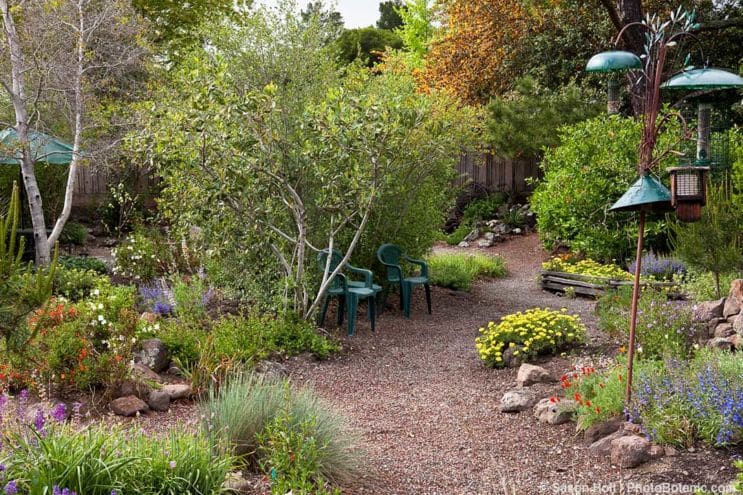
Layered garden of trees, shrubs, grasses, and perennials with bird feeders
What does the research on bird feeding show? Some studies have suggested that feeding does no harm and may help birds, especially in times of extreme weather.
Some studies have found that birds readily switch to natural foods when feeder foods are no longer available. Birds that visit feeders for their own food are often seen feeding insects or other natural foods to their nestlings. And although there have been well-publicized exceptions, migration seems to be triggered more by day length than by food supply.
Unfortunately, research has produced conflicting results, and it has been impossible to separate the effects of feeders from other factors such as habitat loss or climate change.
Despite considerable attention from academic researchers, conservation organizations, and the massive bird-food industry, we know little for certain about the effects of our near-global feeding of wild birds, especially long-term effects on bird populations.
For one example: If feeding brings weaker birds successfully through the winter — birds that would not survive to reproduce without our help — what is the long-term effect on the health and vigor of bird populations? We just don’t know.

Berries of red flowering currant (Ribes sanguineum) are popular with birds
In the absence of solid evidence, it seems wise to offer feeder foods only as a supplement to a wide variety of natural foods in a garden designed to support wildlife. Probably most important is to plant natives and avoid pesticides.
Research suggests that our gardens should consist of at least 70 percent local native plants to support the insects needed by birds, especially as food for nestlings. Choose “keystone” plants whenever you can; these are species fundamental to the health of the local ecosystem.
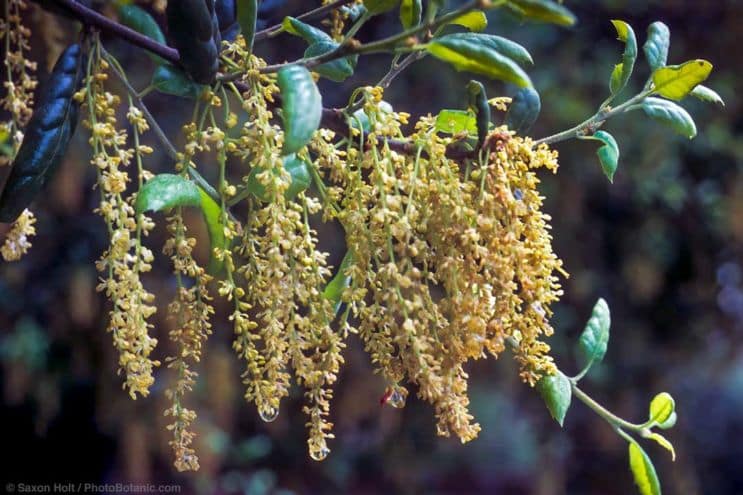
Leaves and flowers of coast live oak (Quercus agrifolia), a keystone species in much of northern California
Layered and diverse plantings provide food and protective cover for birds and other wildlife. Rake and sweep, don’t blow; even paved surfaces hold surprising bounty for seed-eating birds.
If you have the space, leave some areas untended, cutting back for fire safety only after weeds have gone to seed. Let leaves remain on the ground to condition the soil and provide cover for insects; top with compost if you want a groomed appearance.
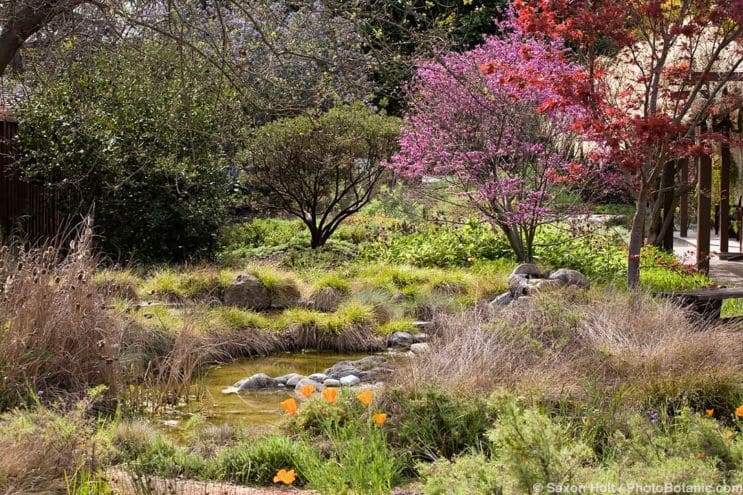
Small-space wildlife habitat garden with pond
Leave drying seedheads on flowering plants until spring as shelter for insects and food for overwintering birds. Provide a clean, reliable source of water and don’t use poisons of any kind.
If you also feed birds, keep feeders scrupulously clean, space them widely to avoid overcrowding, and take them down temporarily if predators become a problem. Use high-quality foods favored by the local birds you want to attract. There is plenty of research on that.
Share This!
Related Articles
By: Saxon Holt
By: Nora Harlow
By: Nora Harlow



